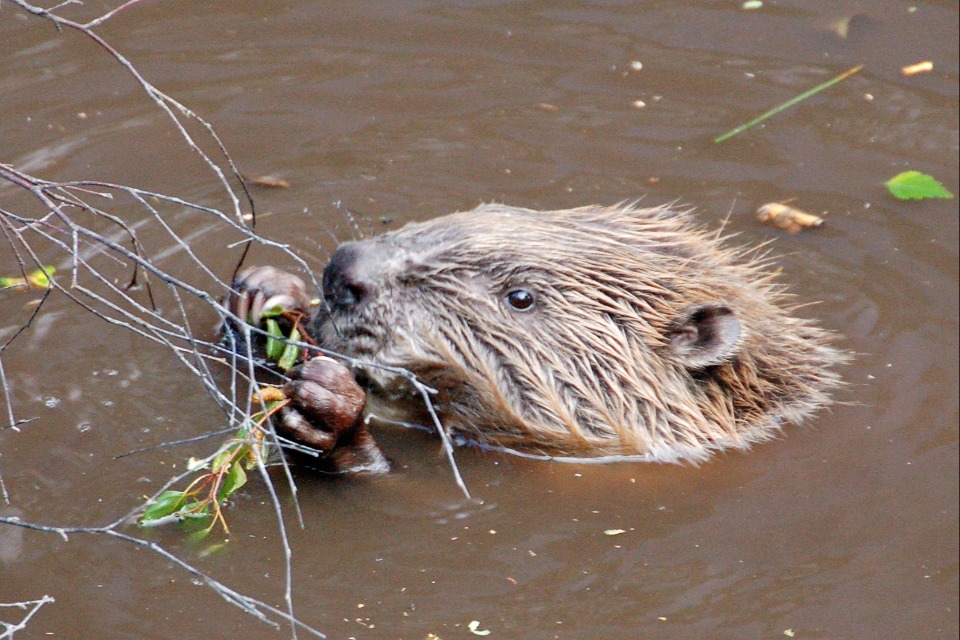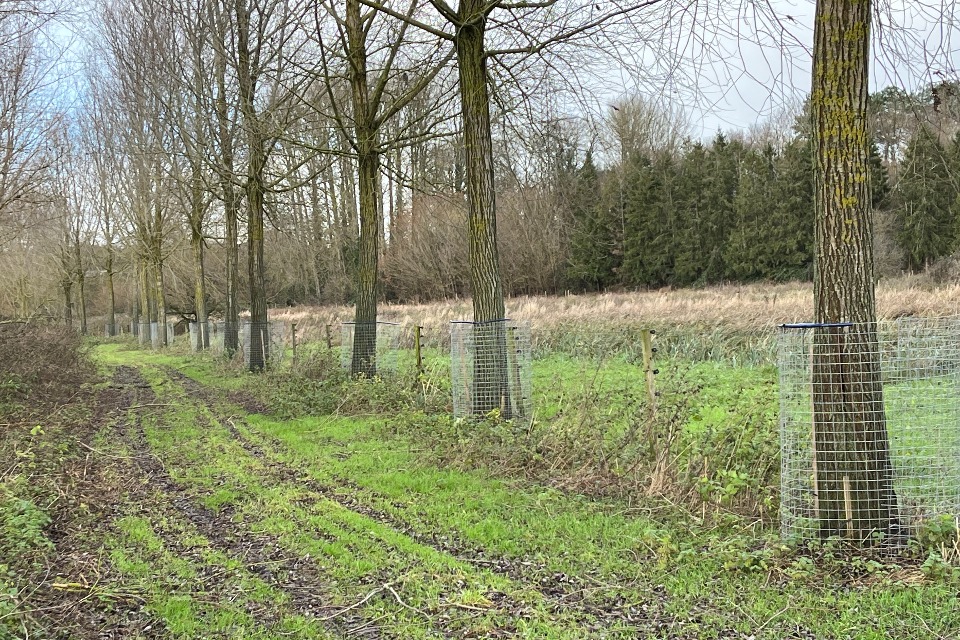How Nature and Nurture is protecting its timber from Eurasian beaver damage
Read how Nature and Nurture, a riparian woodland in Wiltshire, has used the Countryside Stewardship grant to protect valuable cricket bat willow from Eurasian beaver damage whilst adapting to seasonal flooding.
Key facts
- site: Nature and Nurture, Wiltshire
- size: 2 hectares
- establishment method: planting
- type: riparian woodland; established plantation
- grant: Countryside Stewardship Protection and Infrastructure grant (BC4)
- key objective: cultivation of cricket bat willow (Salix alba var. caerulea) for timber
Tree protection
- main mammal causing damage or risk to trees: Eurasian beaver
- main tree protection method: Rural Payments Agency-specification welded-mesh tree guards
- duration of main tree protection methods: 1 to 2 years
Growing cricket bat willow for timber
Nature and Nurture is a two-hectare riparian woodland located along the River Avon in Wiltshire. The area is low-lying and made up of a mix of alder and willow trees. The site experiences seasonal flooding, with floodwaters often exceeding 1 metre for 2 to 3 days at a time and persisting for several weeks each year.
Within this woodland is an established plantation of around 600 cricket bat willows being grown for timber. These trees are planted in 2 rows, forming an avenue that stretches 1.6km along the riverbank. Known for their rapid growth and straight stems, cricket bat willows produce tough yet lightweight wood, making it a valuable wood ideal for crafting cricket bats.

Eurasian beaver. Credit: Paul Stevenson via Flickr (CC by 2.0)
The need for individual tree protection
Eurasian beavers have been present along this stretch of the River Avon for at least 3 years. During that time, they have felled 5 cricket bat willows, resulting in the loss of valuable timber crop. In response, the landowner Tristram Lewis recognised the need to protect the remaining trees from future beaver damage.
Given the layout of the site, fencing off the entire area would be costly and labour intensive. There were also concerns that seasonal flooding could cause debris to accumulate against the fence, potentially damaging it or disturbing the natural water flow – an outcome that would require planning permission. This, combined with the fact that Tristram did not want to restrict the movement of other wildlife in the area, led to a more targeted solution. Tristram opted to protect each individual cricket bat willow.
Choosing site-appropriate methods to protect from beaver damage
Between 2023 and 2024, with funding from the Countryside Stewardship Protection and Infrastructure grant (BC4), Tristram began installing welded-mesh tree guards around each of his cricket bat willows. These were secured in place by 2 hardwood stakes per tree.
To account for the site’s frequent flooding, the guards were installed up to a height of 100 to 120cm, instead of the minimum requirement of 90cm. This extra height ensures that the guards extend above the floodwater the site experiences. Tristram has found that the rubber strip, designed to prevent the top of the tree guard from rubbing the tree, must be secured very firmly, and even then, can still be lost during strong floods.
Over time, Tristram became concerned that the hardwood stakes were not well suited to the waterlogged conditions and could rot. He noted:
The above-the-ground stake can be submerged for weeks in a year, but within the ground it can be standing in an inch or two of water for many, many more weeks of a year.
Based on these concerns, he contacted the Rural Payments Agency and received approval to use rebar (reinforcing bar) metal stakes in place of wooden ones. Using these durable materials has meant that he has hardly had to replace or repair any of his tree guards.
Though some of the native, unprotected alder and willow are still foraged, Tristram has not lost any protected trees to beaver damage. While safeguarding exposed roots required extra materials, the grant was covered all installation costs.
Encouraged by the success of this approach, Tristram plans to use these methods when planting new cricket bat willows in the spring and beyond. He recommends other landowners pursue the Countryside Stewardship grant when faced with similar challenges.

A row of cricket bat willows fitted with Rural Payments Agency-specification welded-mesh guards along the River Avon. Credit: Tristram Lewis
Plans moving forward
In the future, Tristram hopes to introduce a small number of cattle to graze seasonally on the site. This would provide both welfare benefits for the livestock and help manage the dense growth of nettles around the cricket bat willows. If left unmanaged, these nettles can reach heights of up to 2.1m, making it difficult to access and navigate the site to install and maintain tree protection.
However, for now, livestock remain excluded as Tristram considers the risk of cattle damaging the welded-mesh tree guards and the cost of additionally installing cattle-proof cactus tree guards to be too high. Despite these limitations, he remains committed to refining his management practices and adapting his approach to ensure the long-term success of the cricket bat willow plantation.
Further resources
For additional information, consider the following resources:
- Countryside Stewardship: for information on how to apply for a Protection and Infrastructure grant
- NatureScot: for guidance on protecting trees from Eurasian beavers using wire mesh
- Beaver Management Group: for support and advice for landowners living alongside Eurasian beavers in England, Scotland and Wales